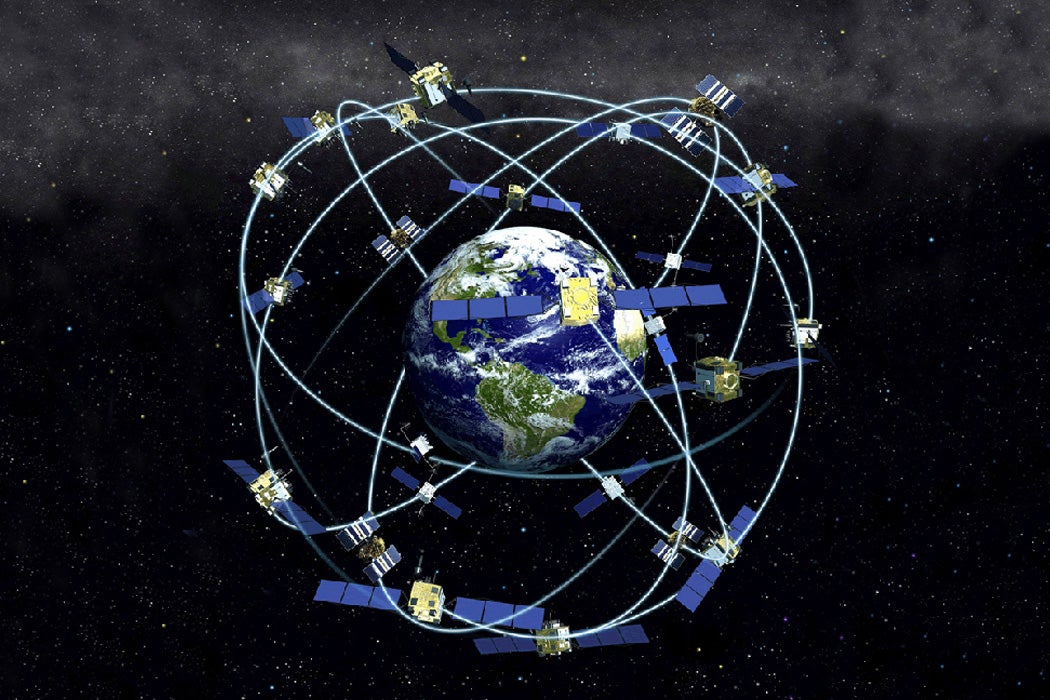Gaze upwards on a clear night, and you might see a tiny bright spot moving in a slow, straight arc across the sky. One satellite is a minor addition to the starscape, but what happens as their numbers grow? Elon Musk and SpaceX have launched the first set of sixty satellites in Starlink, a web of what will eventually be thousands of satellites designed to provide internet to every corner of the globe. Astronomers fear that this constellation of satellites will soon obscure our view of the stars, disrupting research. It’s the latest salvo in a long war against light pollution.
As Jacob Hoerger writes in the New Atlantis, ever since the spread of electric lighting, light pollution has been a problem for astronomers and dreamers alike. Disruptions to nocturnal wildlife and possibly human health from artificial light have been examined, but the damage from light pollution is more fundamental. Hoerger provides frightening statistics. Even without the new satellites, most urban residents of industrialized countries cannot see major constellations; two-thirds of all Americans will never see the Milky Way. Some changes are physical: according to data from the late 1990s, 40% Americans will never experience darkness deep enough for their eyes to fully adjust. Lights from distant cities cast a glow in some of our remotest areas.
This especially affects astronomers. As early as the nineteenth century, astronomers began warning that astronomical phenomena were becoming more difficult to see. The spread of urban and suburban areas have affected storied observatories such as California’s Mount Wilson Observatory and Palomar Observatory. Not even a mountain range was enough to preserve the darkness for the Kitt Peak National Observatory near Tucson, Arizona. Light pollution effectively put an end to building new observatories in North America. Most new large telescopes are located in remote mountainous areas like Hawaii or Chile, to take advantage of altitude and darkness.
Weekly Digest
As Hoerger notes, the problems of light pollution go beyond ruining the view. According to a 2010 estimate, the cost of wasted outdoor lighting adds up $7 billion a year in the United States. Light requires energy—and emissions— to produce. Therefore, light that is generated pointlessly is a significant contributor to climate change.
Nevertheless, progress is possible. In many areas, regulations protect wildlife such as sea turtles from disruptive lights, reducing excess light at for least part of the year. Astronomical research is a potent economic engine, so cities like Tucson have passed ordinances to reduce light pollution and protect this key industry. Increasing LED use reduces both energy costs. Dark sky preserves are becoming more common. Satellite developers have pledged to try to make satellites darker. But still, Hoerger suggests that the only thing that will truly spur regulators to act is humankind’s inherent sense of wonder.







